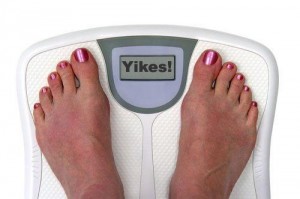As Summer slipped into Autumn, I noticed the number on the scale begin an upward creep.
A half pound is not much.
Weight vacillates. Too much salt, weight goes up. Dehydrated, weight goes down. I’m accustomed to watching the scale relate my fluid level on a daily basis.
Cycle changes can instantly add an additional 10 pounds and then subtract it.
So, when my weight showed an inclination to rise, hold steady, and then rise again, I took immediate action.
I blamed it on hormones. Then, I upped my caloric intake and reduced my activity. I craved sugar, so, since the season of all things sweet was nearing, i began to celebrate with candy.
October, November, and December were sweet months…filled with tempting confections that I didn’t resist.
While active in the Summer, I was able to eat anything I wanted and still lose weight. But, with the coming of the cooler, slower, less active months, my metabolism slowed. I lost muscle mass and gained lazy fat.
And, here I am on the back side of New Year’s wondering what happened and how – and what to do about it.
Stop blaming hormones. Cut calories, kick sugar to the curb, eat natural, push myself physically….yes, I know what to do and I know how to do it.
It’s a matter of doing it.
Spring? Where are you? Yet three months away…by the time of its arrival I will have packed on 10 more pounds.
Losing 10 pounds creates enough angst. The thought of losing 20, well…let’s not go there.
Truly. Let’s not.
So, no matter the weather – no matter the temp, I’m lacing up my shoes and heading out to build lean muscle and burn off this jiggle.
What took me 3 months to pack on will take me 6 to take off.
Memo to self:
Get period wise, woman! Work your cycle – don’t let it work you!
Nuff said. I’m up from here.